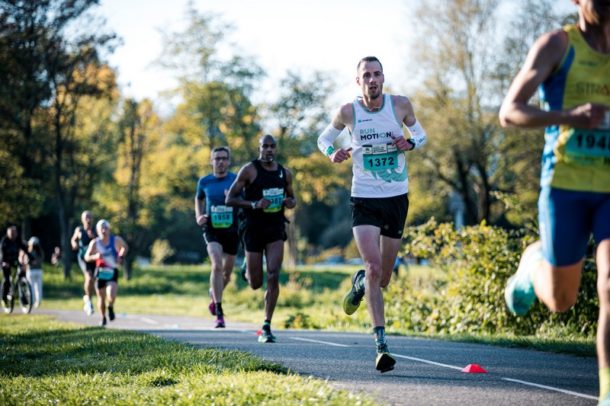
Are you gearing up for an upcoming race and notice specific pace sessions outlined in your training plan? Often, you might encounter terms like SP10, SP21, or SP42, denoting Specific Pace sessions for 10K, half-marathon, and marathon distances, respectively. Let’s explore the significance of these terms and their role in your training program.
Contents
Developing your skills and familiarizing yourself with your pace
The main objective of participating in targeted pace sessions is to internalize the pace you’ll maintain during your race. While these exercises are instrumental in improving physiological attributes such as VO2max, running efficiency, and endurance, they also play a critical role in the neuromuscular process of memorizing your race pace.
For instance, if you’re targeting a marathon finish time of 3:00, equating to a pace of 4:17 per kilometer, your training might include specific marathon-pace training like 3 sets of 20 minutes at 4:17/km, with 5-minute recovery intervals between sets. This method ensures that your body and mind are primed to recall and execute at this pace when race day arrives.
Interestingly, even if your main event is a marathon, your training program may incorporate pace-specific sessions for shorter distances, such as 10K or half-marathon. Engaging in these faster-paced workouts is beneficial for enhancing the physical capacities previously mentioned and helps you acclimate to your marathon pace more comfortably.
Training diversity can be likened to a balanced diet: incorporating a variety of training intensities and paces fosters more significant improvement than repetitive sessions at a uniform pace.
Determining your pace for targeted sessions
The appropriate paces for your specific pace sessions are influenced by several factors: your target times, your Maximal Aerobic Speed (MAS), and your overall endurance capabilities. To tailor these sessions precisely to your needs, utilizing a performance predictor can be immensely helpful. Such tools provide paces for various distances — including 5K, 10K, half-marathon, and marathon — in minutes per kilometer, along with the corresponding MAS percentage.
Should you find yourself slightly behind the planned paces during a session — say, by about 5 seconds per kilometer — there’s no cause for alarm. It’s quite common to experience slight discrepancies in performance due to the cumulative fatigue of training. Remember, race day conditions are optimized for peak performance, offering both physical freshness and a heightened motivation to excel.
To illustrate, in preparation for a 10K race that I completed in 29:31, I conducted a session of 8x1000m with an average pace of 3:00/km, a week prior. Yet, on the day of the race, I managed to surpass this pace, averaging 2:57/km. This improvement can be attributed to strategic training within a significant cycle, the challenge of less than ideal terrain during training, and the advantage of race day conditions and physical readiness, allowing me to exceed my preparatory achievements.
However, if your performance deviates significantly from your target — for example, by more than 15 seconds per kilometer — it may be prudent to adjust your goals accordingly.
Maximizing the effectiveness of these sessions includes performing a thorough warm-up, complete with strides and straight runs. This preparatory step ensures a more accurate and achievable pace during the workout than if you were to commence immediately following the warm-up without any intermission.
Specific pace 10K sessions (SP10)
For those preparing for a 10K event, specific pace sessions, or SP10, are typically 6 to 8 repetitions of 1km, with a recovery interval of 1 minute and 30 seconds between each kilometer. For a runner targeting a 40-minute finish for the 10km, this translates to maintaining a pace of 4:00/km.
A thorough warm-up, including drills and strides, is highly recommended for these fast-paced sessions. The targeted paces for these intervals should fall between 85% and 92% of your MAS, depending on your endurance levels and your goal time.
Specific pace half-marathon sessions (SP21)
In preparing for a half-marathon, the specific pace sessions, or SP21, often involve 5 to 6 repetitions of 2km runs, with a 2-minute recovery period between each 2km segment. For runners aiming for a 1 hour and 30 minute finish time in the half-marathon, this requires maintaining a pace of 4:17/km, both on race day and during these specific 2km intervals.
The targeted paces for these sessions generally range from 80% to 90% of your Maximal Aerobic Speed (MAS), which varies based on your individual endurance capabilities and the goal time you’re working towards.
Specific pace marathon sessions (SP42)
For marathon preparation, specific pace sessions, or SP42, can include a variety of sessions such as 3 sets of 20 minutes, as previously mentioned, or closer to the race, 2 sets of 40 minutes with a 5-minute recovery period. Additionally, conducting a 15km or 20km test run at marathon pace can be highly beneficial.
These test sessions offer the perfect opportunity to fine-tune your nutrition and hydration strategies and to test your full race day attire. It’s crucial to simulate as closely as possible the conditions you will face on race day.
The targeted paces for these sessions generally range between 65% and 85% of your Maximal Aerobic Speed (MAS), depending on your endurance capacity and the goal time you aim to achieve. This variance means that it’s inaccurate to generalize that SP42 equates to 80% of the MAS for all runners, a simplification sometimes found in training plans.
It’s important to recognize that each pace category, be it SP10, SP21, or SP42, is personalized. Our performance predictor tool can help you calculate these paces based on your unique endurance index. These specific pace sessions are part of a comprehensive training program available in the RunMotion Coach app, which has been adopted by over 600,000 runners. Why not join them and take your running to the next level?